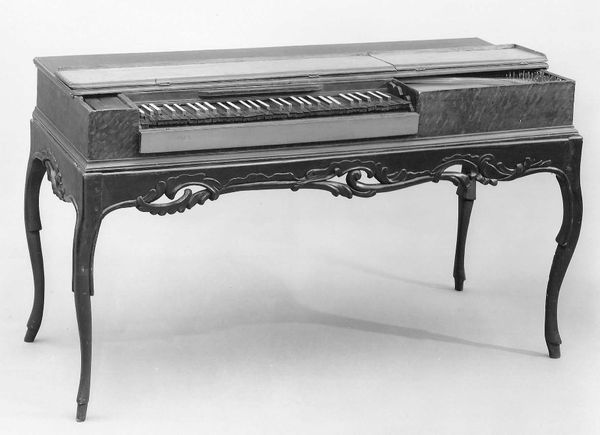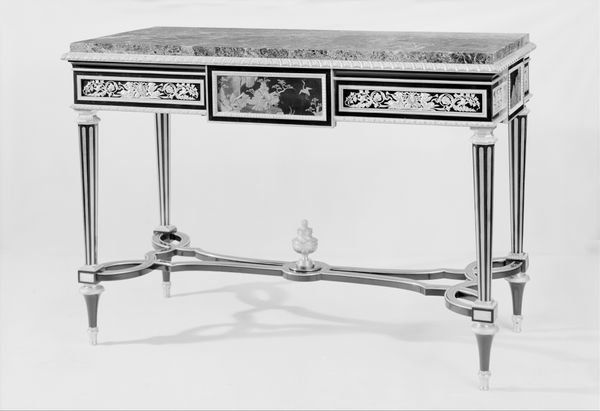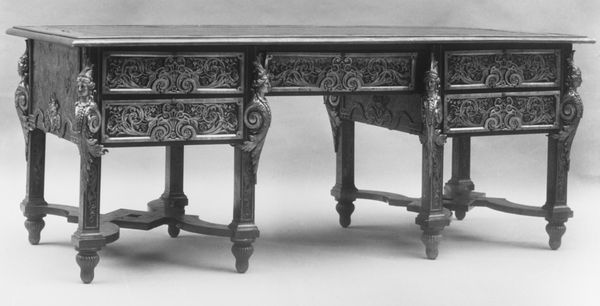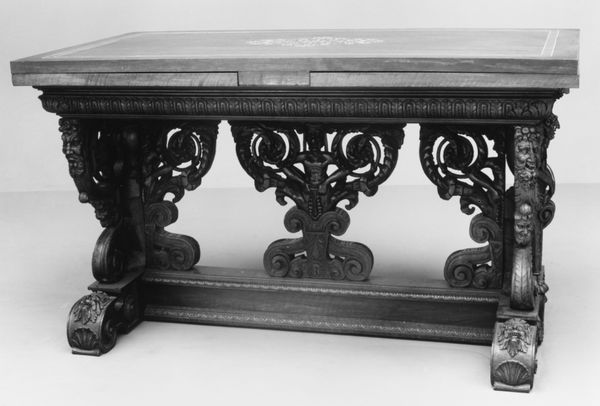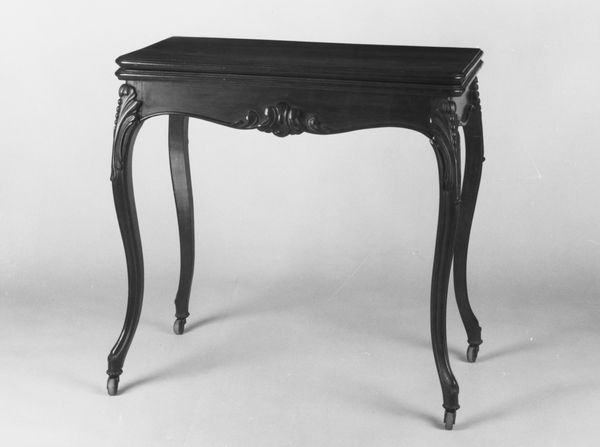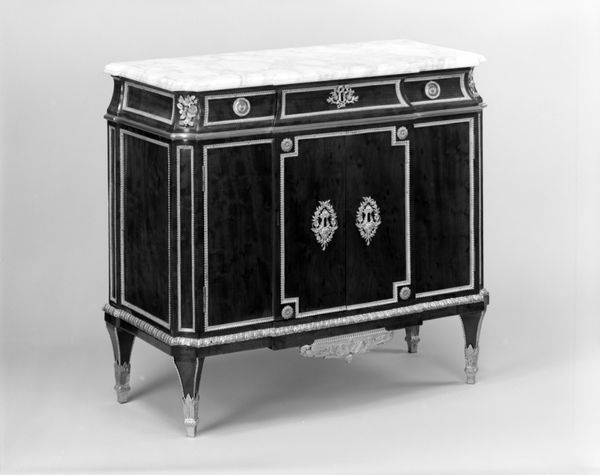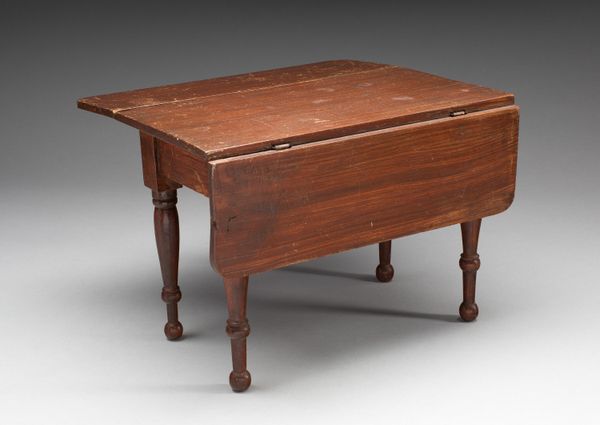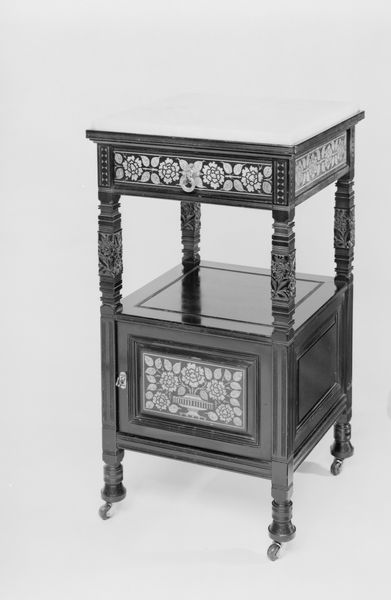
carving, sculpture, wood, marble
#
neoclacissism
#
wood texture
#
carving
#
sculpture
#
furniture
#
sculpture
#
wood
#
decorative-art
#
marble
Dimensions: H. 37 x W. 53-3/4 x D. 21-1/2 in. (94.0 x 136.5 x 54.6 cm)
Copyright: Public Domain
Curator: This elegant commode, or cabinet, was crafted between 1780 and 1790. The artistry of Adam Weisweiler shines through in every detail. Editor: My immediate impression is one of restrained elegance. The rectilinear form and symmetrical design evoke a sense of order and classical harmony. It’s quite austere. Curator: Precisely. Weisweiler was a master of Neoclassical design. Note the careful balance, the restrained ornamentation. The commode features a marble top, with a body constructed of wood, enhanced by carving and sculpture. Editor: And it's that interplay of materials – the cool, hard marble juxtaposed with the warm, textured wood – that I find particularly compelling. The labor invested here is clearly very significant; this was built, I presume, by more than a single set of hands. Curator: Indeed. The commode represents a confluence of skilled labor. Think about the carving, the joinery, the polishing – all separate crafts converging. We must appreciate the coordinated efforts and conditions necessary to produce such a piece. Editor: Absolutely, I'm always thinking of production; its social context is critical. However, considering it solely as a functional object feels inadequate, doesn’t it? Its very form transcends utility, reaching toward something...more symbolic? The rigid frontality and proportions imply deeper concepts of status and control. Curator: Certainly. And in this object, we see the apex of craft. The meticulous execution of line, shape and material displays the prevailing formal theories of the time. Editor: It’s truly impressive how a seemingly simple form embodies such a depth of artistic intention, not just aesthetically, but economically. It reflects so much about its epoch. Curator: Indeed, it has provided ample ground for discussion. I leave with a greater understanding of how Weisweiler blended formal elegance with the social currents of his time. Editor: Agreed. This experience deepened my appreciation of materiality and process and highlighted labor relations during the rise of neoclassicism. Thank you.
Comments
No comments
Be the first to comment and join the conversation on the ultimate creative platform.

